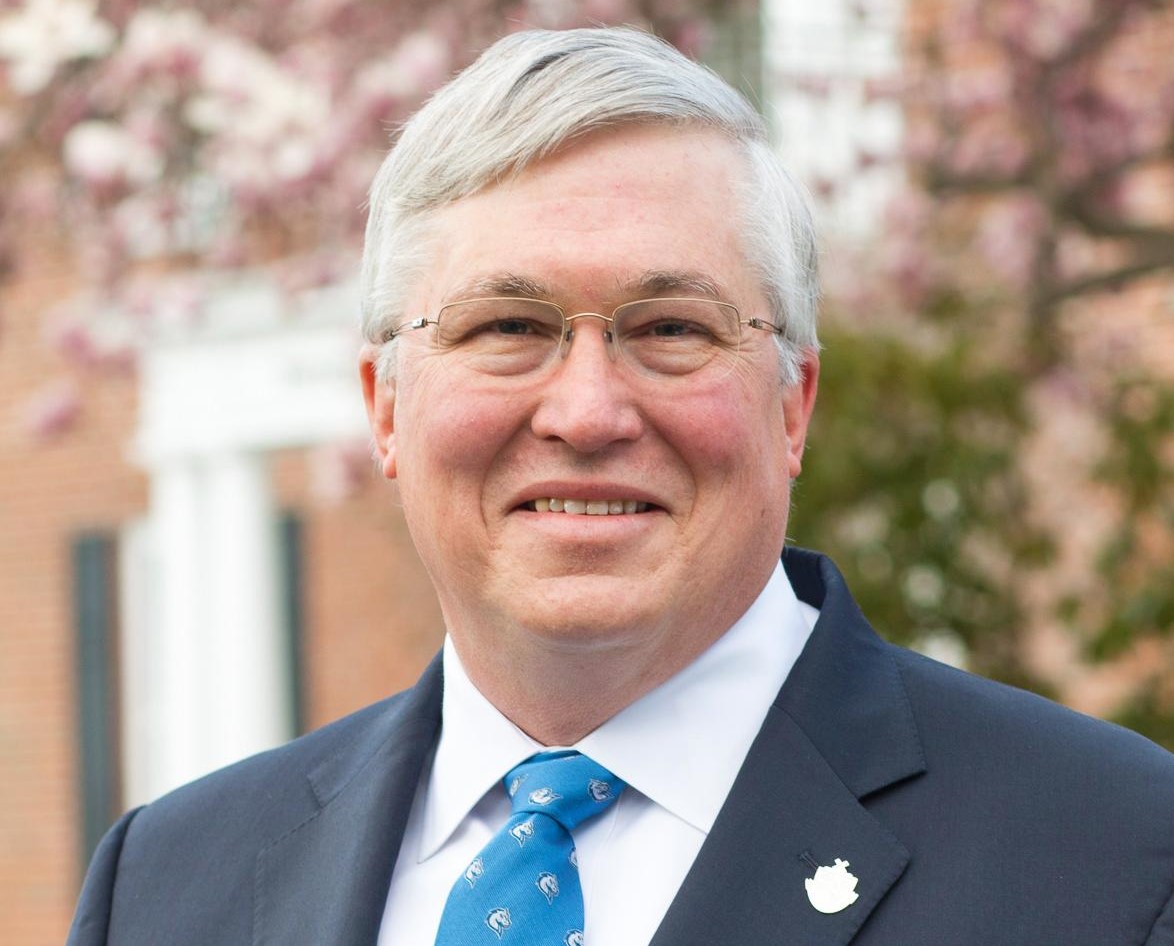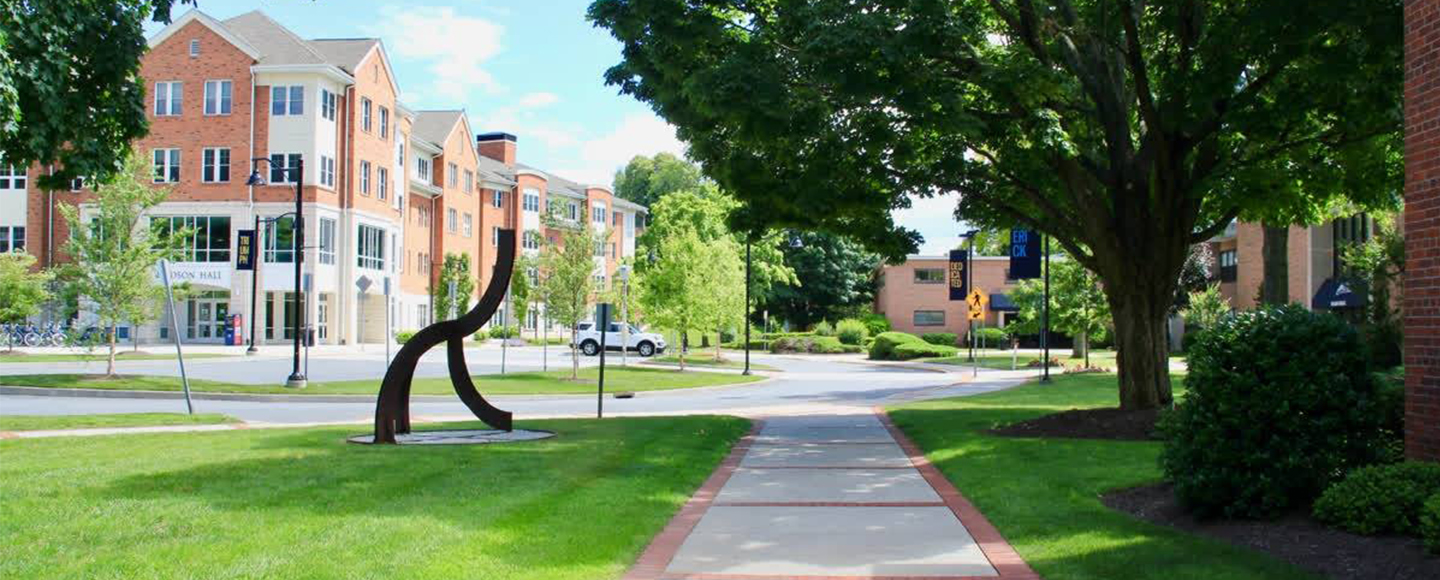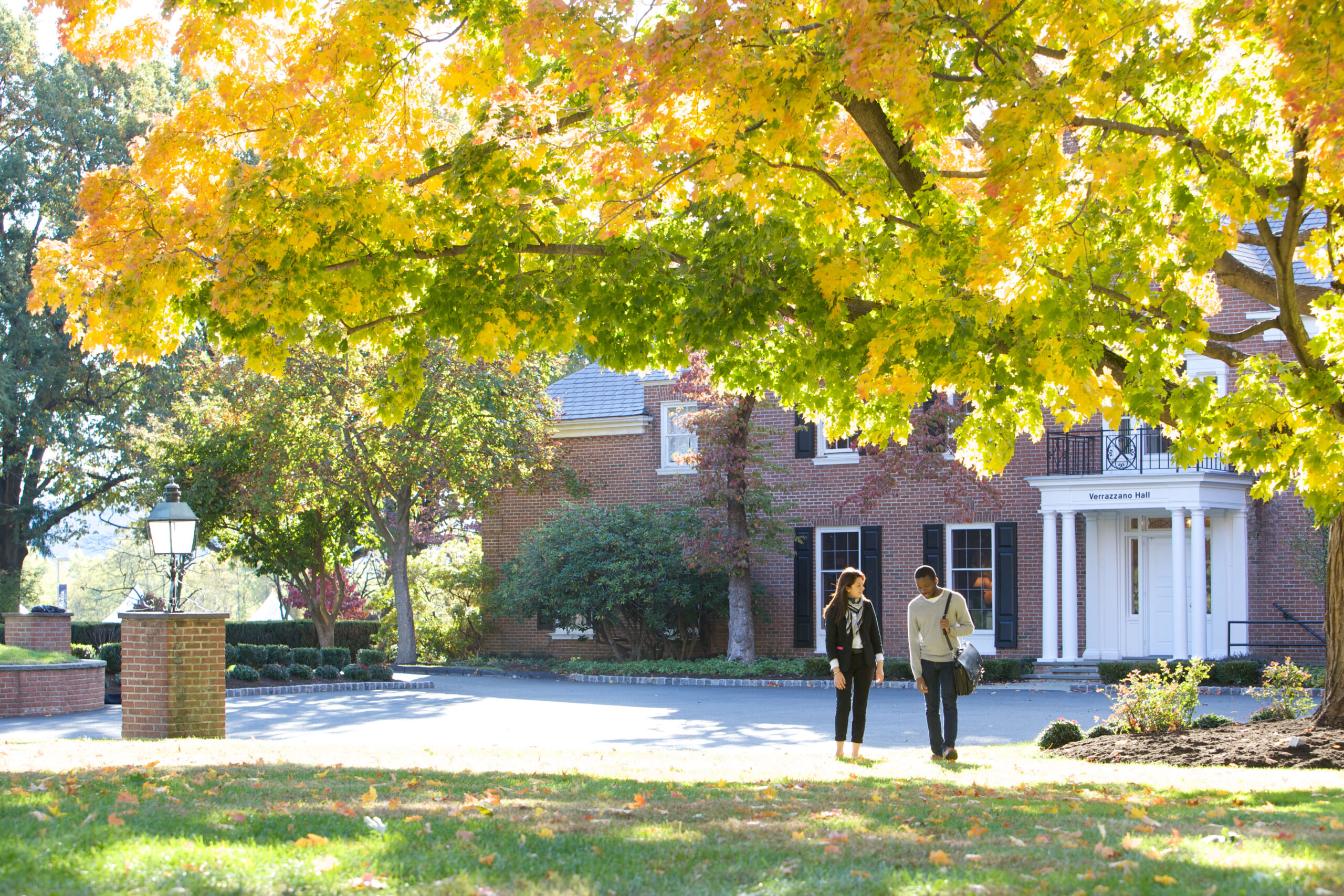
Tim Hall arrived at New York’s Mercy College in 2014, a Southerner ready to take on new challenges in a vastly different place from his previous home at Austin Peay University in Tennessee
Right away, he got them.
Hall took over as president at Mercy “just in time to catch the wave of declining enrollment.” Prior to that, the college had raised admission requirements, which cut the freshman class by a third. For the next six years, Hall would have to fight through those currents to make the changes that ultimately would uplift Mercy.
Under Hall’s leadership, Mercy improved freshmen retention by almost 10 percent. It created new academic initiatives, rebuilt infrastructure at its campuses in Dobbs Ferry, Manhattan and the Bronx and agreed to buy out a struggling College of New Rochelle and take in its 1,800 students.
There seemed to be no stopping Hall and Mercy from its goal of serving and providing opportunities for all students – mainly commuters, mostly minorities and largely lower-income.
And then the COVID-19 pandemic hit and hit Mercy hard.
“It’s one thing for you to have your own computer and your own broadband service, it’s another for your family to have one computer and three or four siblings are all sharing it during the day,” Hall says. “That’s the world that Mercy lives in, where there might not even be a computer. We’re not being completely successful. It’s just the truth. It’s hurting our retention rates. And that grieves me a lot.”
But ever resilient, Mercy is finding ways to reach and retain students. It has loaned out computers and gotten internet access to those who don’t have it. It used CARES Act funding to make all of its classrooms Zoom capable. All of its undergraduates and graduate students have now taken at least one online course. Prior to that, it was 40%.
Through it all, Mercy College has managed to keep its retention rate high. When Hall arrived, it was 66.2%. That ballooned to 76.8% last year. Even after COVID it remains at 73.4%, with Black and Hispanic students topping the list – a testament to the many creative initiatives and the foundation Hall and his team have built since he started there.

Making a difference at Mercy
The choice of Mercy was probably a stunner for some who saw Hall as a career of leader of Southern institutions, as president at Austin Peay and as associate provost at Mississippi. But for Hall, the decision was easy.
“Mercy just provided this astonishing opportunity, both in terms of being right in the middle of things here in New York, having campuses in the Bronx and Manhattan at Herald Square,” Hall says. “But the thing that really sold me is I’m used to president interviews. There’s this question that’s normally stated, but always implied, what are you going to do to lead the college to be better? I promise you a lot of them mean, we want you to get better students for us. We think if we got better students, everything would be better. Mercy’s search committee persuaded me early on that they wanted me to help the college get better for precisely the students it already had.”
The students Mercy has are 50% Hispanic/Latinx, 72% female and their families make about $25,000 per year. Most work, either part- or full-time and the majority are the first in their families to attend college. They have been adversely and disproportionally affected by the pandemic. But Mercy is finding ways to reach them and keep them on board.
“We’re doing everything we can not to underestimate them, not to let them underestimate themselves, and help them to succeed,” Hall says. “If you were to look at us 12 years ago, you would see enormous gaps in retention and graduation rates, along lines of race and ethnicity, as great as 25% in some cases. Today, those gaps, at least for retention, are gone. In fact, our Hispanic and black students are being retained at higher rates than other students.”
What does Hall attribute the success to?
“A series of intentional practices that have been shown around the country to help students succeed,” he says. One example: “Proactive advising instead of sit-in-your-office-and-wait-for-students-to-show-up kind of advising.”
One of the changes he and his team made to solve the initial declining enrollment numbers was to look at admission requirements, which had elevated entry from scores of 75 to 80.
“So I said, tell me about the people who have a 78 or 79. Do they flunk out? Are they not making it?” Hall asked. “I discovered they do as well as everyone else. So we pulled it back to 78. Those people who think that the only way to get more success from students is to exclude some students, they’re just off base. It’s not true at all. When you raise admission requirements, when you practice success by exclusion, you’re going to lose students.”
To help bring in and maintain a portion of students who may not have been English or Math ready, Mercy instituted co-requisite remediation, giving students tutorial sessions alongside courses with real college credit. Hall says traditional “get-ready” courses, where students get no credit, are not effective, with only 1 in 10 students passing that remedial course and subsequent courses.
“There’s something about taking a course and paying for it, that if you don’t get college credit for it, it is demoralizing to students,” he says.
For students at Mercy, eliminating some barriers was almost necessary to get enrollment numbers back up. And for Hall, it was simply the right thing to do, for the population Mercy traditional serves.
“The biggest challenge was the challenge of student success,” Hall said. “I knew that’s our Board was really committed to do everything that we could to help our students who are predominantly low income, who are predominantly students of color to help them to succeed.”

Meeting challenges head on
The coronavirus pandemic presented a huge roadblock for Mercy College, the largest nonprofit private minority-serving institution in New York, and the students it serves. Hurt by the digital divide, most students wanted some form of face-to-face instruction. That simply wasn’t possible, given New York’s restrictions on school class sizes and gatherings.
So Mercy opted for a hybrid model for its three campuses. About 3% of its sections are completely in-person, those such as health-rated degree programs. The majority happen in some form through videoconferencing, but with the 45% capacity allowance, Mercy has been able to give students who need face-to-face instruction the opportunity to do so.
“It’s not at all uncommon for us to have a situation where there’s a professor in the classroom talking to a few students, but then there are students participating synchronously with Zoom from the Bronx or from Westchester or from Manhattan,” Hall said. “I’ve been wrestling since I got here about how to offer more things at our different campuses. Sometimes there’s a struggle with just too many or too few people at a particular place. Now we can have a class that includes people from any place.”
Athough Mercy’s students largely want in-person learning now, that will continue to evolve in the future.
“I can’t believe there is a circumstance in the world that’s going to keep more students from wanting online courses in the future,” he says. “We have to be prepared to meet that demand. I think synchronous online is going to be bigger than it’s ever been.”
Hall lauds his students for their efforts and also his instructors, who have done well in adapting to the changes.
“They are doing great, from our full-time faculty to our adjuncts, they’ve all pitched in,” Hall said. “It had to be done, and they did it.”
The future at Mercy
Mercy College took on a huge risk when it acquired the College of New Rochelle last August, but it has paid off. With a bit of an investment, Mercy managed to take in all of New Rochelle’s 1,800 students. Many of those were nursing students who shifted into the already existing program at Mercy, which has now tripled in size. From that base, Mercy now has a pipeline of students coming through its system. It also received its first big gift from an alum at New Rochelle – a $100,000 scholarship endowment.
“It’s been quite an adventure,” Hall says. “[The nursing program] will produce a continuing enrollment stream of about 1,200 more students than we currently had. It would have taken us years to grow that by ourselves.”
The forethought of that decision and others have illustrated the insightfulness happening at Mercy, even through difficult times. Hall shared his thoughts on leadership and how other college leaders should be approaching their positions, particularly during the pandemic.
“First, you have to be prepared to learn,” Hall said. “2020 is a different, different time than 2010. And if you’re not a learner, if you’re not a lifelong learner, you’re going to be a lousy leader, just because we face ongoing challenges, For example, COVID. Who could imagine that I would end most of my days during the summer with an emergency response team meeting, about what we were going to do in the fall because there was a worldwide pandemic? And the other thing I’m convinced of is if you can’t be transparent, and include people in what’s going on, most people are never going to follow.”
He says teamwork has been the driving force behind Mercy’s success, leaning on a quote from the Chinese philosopher Lao Tzu on leadership.
“He said a good leader, when his work is complete and his job is finished, the people will all say, we did this ourselves. I’ve always been convinced that the heart of leadership is to create a context in which the people that you are privileged to lead think of what’s going on as their work, their accomplishments.”
As for accomplishments, there is one that stands out for Hall in his time at Mercy.
“I am most proud of us making a strong start at closing the equity divide that exists in American higher education, along lines of race and ethnicity,” he says. “We’re not done. We’ve made a very strong start. The fact that now our retention rates for our students of color are higher than for other students shows that we’re on the right path.”
Chris Burt is a reporter and editor for University Business. He can be reached at [email protected]

